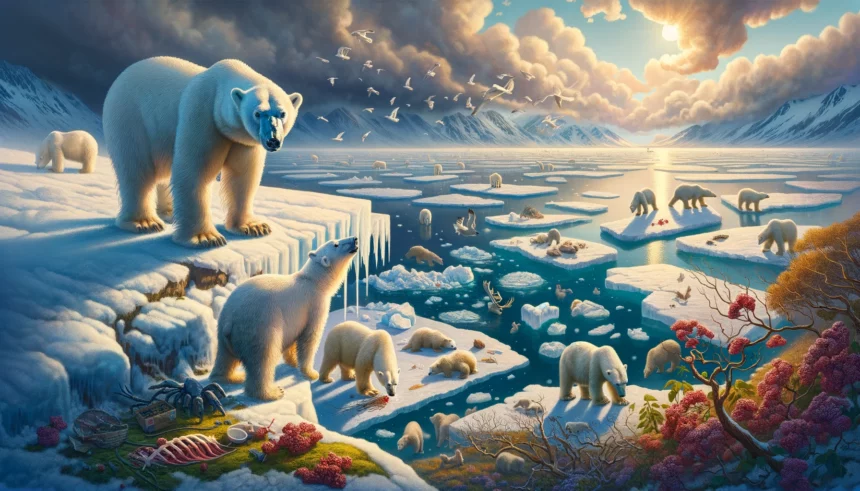Polar bears in Canada’s Hudson Bay are at an increased risk of starvation due to the climate crisis causing extended ice-free periods in the Arctic, despite their efforts to adapt by expanding their diets. The Arctic, warming at a rate two to four times faster than the global average, is witnessing longer summers without sea ice, crucial for polar bears to hunt their primary prey, ringed and bearded seals.
A new study focusing on 20 polar bears has shown that even in the absence of sea ice, these animals continue to seek food on land. “Polar bears are creative… they will search the landscape for ways to try to survive and find food resources,” said Anthony Pagano, the study’s lead author. However, despite consuming a variety of foods, including grasses, berries, and carcasses, these efforts fall short of providing the necessary calories they get from marine mammals.
The research, detailed in Nature Communications, utilized GPS collars with video cameras to observe the bears over three years. It revealed that while two bears reduced their activity to conserve energy, akin to hibernation, the majority remained active. These findings underscore the dire situation for polar bears, with 19 out of 20 studied losing weight during the land-bound period.
Experts warn that the decline in sea ice directly threatens the survival of the world’s 25,000 wild polar bears. Limiting global warming to 1.5C above pre-industrial levels, as outlined in the Paris Agreement, is crucial for preserving polar bear populations. “As ice goes, the polar bears go, and there is no other solution other than stopping ice loss,” said John Whiteman of Polar Bears International.
















